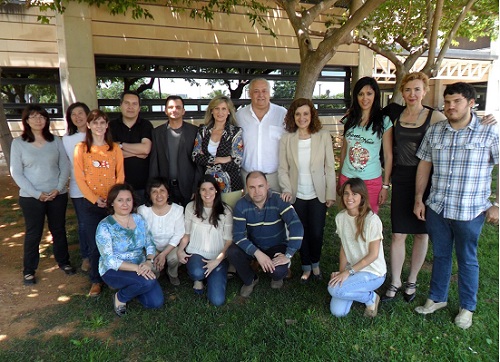.jpg)
According to current estimations, 17 million people are affected, due to high pathogenicity and a disease spreading as a result of climate and global change impacts.
5 de de juliol de 2018
In 1987, the WHO enlisted our help in understanding how humans were infected by Fasciola in Corsica, in areas where livestock was absent. In 1992, WHO asked us to assess whether the helminth causing the disease in the Bolivian Altiplano, at 3800-4100 m asl, was a peculiar altitudinal parasite instead of the traditionally lowland Fasciola. These two initiatives became crucial in showing us that we were dealing with a trematode of unbelievable adaptabilities, transmission capacities and epidemiological heterogeneity, pronouncedly different from the simple homogeneous picture generally accepted for fascioliasis at that time. Not to mention our surprising survey results showing higher prevalences in children than in sheep and cattle in certain localities. According to current estimations, 17 million people are affected, due to high pathogenicity and a disease spreading as a result of climate and global change impacts.
This thirty year period has allowed us to verify the wide heterogeneity of this disease thanks to the first lessons learned in Corsica and the Bolivian Altiplano. Independently from continent and country, we have always started our research studies at zero, by considering local previous knowledge only as a mere starting base which should be completely re-assessed. In the majority of human endemic areas, previous knowledge was wrong or insufficient, mainly due to an oversimplified extrapolation from animal infection.
Fascioliasis is a disease which needs parallel studies in the field and in the lab. None of these alone allows to understand fascioliasis characteristics in an area, nor design the appropriate control measures for a given endemic area. Unfortunately, such combined research activities need wide funding, due to the high costs of travelling and modern lab techniques. This is the biggest problem of human fascioliasis: it continues to be considered one of the most neglected diseases among all of the neglected diseases. Very rare is the research call in which human fascioliasis appears within the list of fundable objectives, and is rarely able to successfully compete against other well-known infectious diseases. On the other side, human fascioliasis offers Parasitology and Tropical Medicine specialists an extraordinary model for all kind of multidisciplinary studies, which enables research on a global scale, due to its worldwide distribution.
Our article on infection sources reflects all of the aforementioned aspects. It is a decisive step never made before on human disease transmission and epidemiology which we expect to become a standard background not only for future research but mainly for both individual prevention measures and general control initiatives by health officers and key decision-makers in national administrations and international agencies.
Numerous photographs illustrate the diversity of human infection sources and disease heterogeneity according to country. For authors, moreover, such images quickly remind us of the many funny anecdotes acquired in the numerous missions: holding our noses in front of an airport customs policeman who furiously insisted on us opening a box transporting human stool samples; people astonished to see many bishops repeatedly making the sign of the cross over our snails after telling them about their importance as disease vectors; lying on the ground while collecting snails and a local man standing beside and offering me a slowly increasing number of camels (up to one hundred!) to buy my wife, followed by someone else telling me that I was wrong not to sell at such a good price; or at a table with the health minister being invited to share just the local food speciality responsible for human infection in the area and unable to escape from the situation.
Nice memories from a very long, fruitful worldwide initiative.




.jpg)








